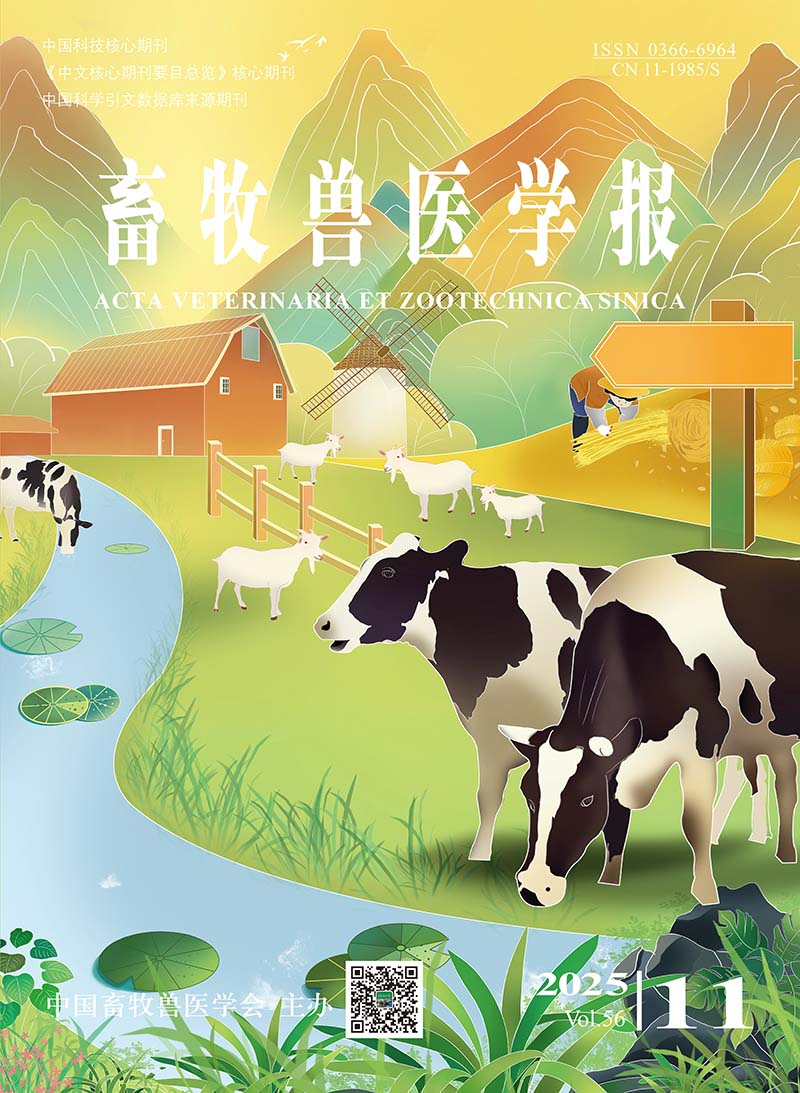-
Preparation and Preliminary Application of Yak (Bos Grunniens) Fas-associated Factor 1 Polyclonal Antibody
- WANG Jingyu, PAN Yangyang, XU Gengquan, ZHANG Rui, ZHANG Wenlan, WANG Xiaoshan, WU Rentaodi, ZHAO Rigetu, CUI Yan, YU Sijiu
-
2023, 54(8):
3369-3382.
doi:10.11843/j.issn.0366-6964.2023.08.022
-
 Abstract
(
243 )
Abstract
(
243 )
 HTML( )
HTML( )
 PDF (15007KB)
(
189
)
PDF (15007KB)
(
189
)
-
References |
Related Articles |
Metrics
Fas-associated factor-1 (FAF1) is a member of the Fas family and contains several multifunctional domains. It can participate in biological processes such as apoptosis, inflammation, necrosis, cell proliferation and protein homeostasis. The purpose of this study was to prepare the polyclonal antibody of yak FAF1, and to explore the biological role of FAF1 in testicular tissues of different ages, and ovaries of different reproductive cycles. The whole sequence of yak FAF1 gene was amplified, and the prokaryotic expression vector pET28a-FAF1 was constructed. The induction conditions were optimized. After purification by Ni-NTA column, the experimental animals were immunized to obtain rabbit FAF1 polyclonal antibody. The testes of male yaks in three age groups of juvenile (1-year-old, 2-year-old), adult (3-year-old, 4-year-old, 6-year-old, 7-year-old) and elderly (11-year-old) were selected, and the ovaries of female yaks in different breeding cycles (follicular phase, luteal phase and pregnancy) were selected. Real-time fluorescence quantitative, Western blot and immunohistochemical(IHC) methods were used to detect the relative expression of FAF1 mRNA, protein and protein expression localization in testes of different ages and ovaries of different breeding cycles. The results showed that the prokaryotic expression vector pET28a-FAF1 was successfully constructed, and the optimal induction conditions were 25℃, IPTG concentration of 0.5mmol ·L-1 and induction for 5 hours. The recombinant protein was mainly present in the inclusion body. After immunizing experimental animals, rabbit-derived FAF1 polyclonal antibody was obtained, with a antibody titer of 1:1 024 000 and good specificity. Real-time fluorescence quantitative results of testicular tissue showed that the relative expression of FAF1 mRNA in testicular tissue of 3, 4 and 7 years old was significantly higher than that of other ages. The Western blot results of testicular tissue showed that the relative protein expression of FAF1 protein at 11 years old was significantly higher than that at other ages, followed by 6 and 7 years old, and the relative protein expression of FAF1 at 3 and 4 years old was the lowest. Immunohistochemistry showed that FAF1 was mainly expressed in sperm, sperm cells, spermatogonia, primary spermatocytes, Sertoli cells, Leydig cells, peritubular myoid cells and seminiferous tubules. The real-time fluorescence quantitative results of ovarian tissue showed that the relative expression of FAF1 mRNA in the luteal phase was significantly higher than that in the follicular phase and pregnancy, followed by the pregnancy ovary, and the follicular phase ovary was the lowest. The results of ovarian Western blot showed that the relative expression of FAF1 protein in ovarian follicular phase and pregnancy were significantly higher than that in luteal phase, followed by pregnancy, and the lowest expression in luteal phase. Ovarian IHC results showed that FAF1 was mainly expressed in ovarian reproductive epithelial cells, granulosa cells, cumulus cells and luteal cells. The expression of FAF1 mRNA and protein in testis of different ages and ovarian tissues of different reproductive cycles is significantly different. It is speculated that FAF1 may be closely related to the development of testis, spermatogenesis and testosterone secretion of male yaks, as well as the physiological processes of follicular atresia, development, maturation and luteolysis of female yaks. The current study provides the basis for further exploring the reproductive physiological function of FAF1 in yaks.






